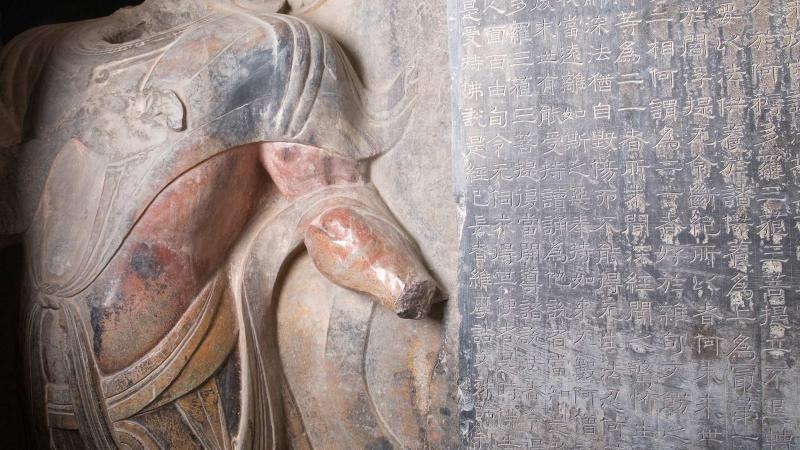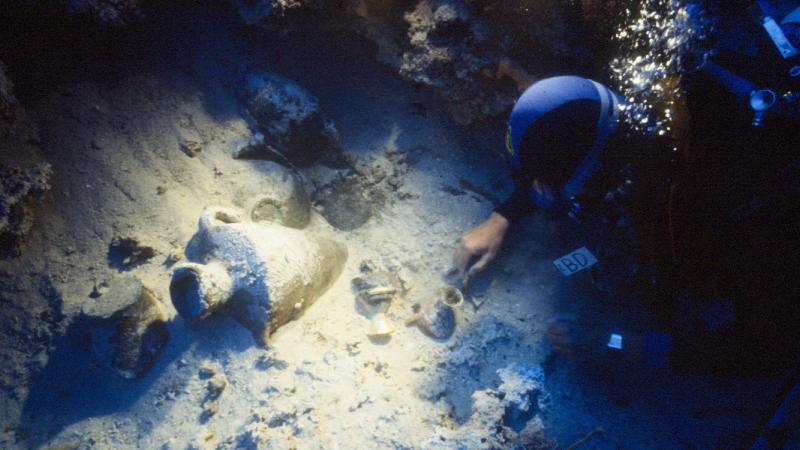Zipped into parkas and huddled under blankets, hundreds of people waited in a line that stretched for blocks outside the National Gallery of Art in Washington, D.C. Not even the bitter chill that descended on the city in February 1977 and the hours-long wait could deter them from seeing the golden artifacts belonging to Tutankhamun—more popularly known as “King Tut”—the boy-king who ruled Egypt 33 centuries earlier.
From November 1976 to April 1979, “Treasures of Tutankhamun” traveled to 6 American cities with the help of $300,000 from NEH. The exhibition started in Washington before moving on to Chicago’s Field Museum of Natural History ($108,894), New Orleans Museum of Art ($97,492), Los Angeles County Museum of Art, the Seattle Center’s Flag Pavilion, and finishing at the Metropolitan Museum of Art in New York, which had organized the tour. More than 6 million people would see the show, turning a museum exhibition into the hottest ticket in town.
The Egyptian government arranged for “Treasures of Tutankhamun” to tour the United States as a gift for its bicentennial. The exhibition was written into the bilateral agreement between the United States and Egypt, signed by Presidents Richard Nixon and Anwar Sadat in 1974. After a volatile period in Middle East politics, Nixon and his secretary of state, Henry Kissinger, wanted the American people to associate Egypt with something more than oil and war.
Tut’s arrival in November 1976 set off a wave of “Tutmania.” In Seattle, you could drink a Tut-themed cocktail at the top of the Space Needle. In New Orleans, you could eat a bowl of Ramses gumbo or a Queen Nefertiti salad. Shops opened to sell Tut t-shirts and tchotchkes, while department stores offered Egyptian-themed housewares.
People snapped up tickets for a chance to see 55 artifacts from Tut’s tomb, which was discovered by archaeologist Howard Carter in 1922. The exhibition featured sculptures of Tut riding a leopard and hunting for hippopotamus. There were boxes inlaid with ivory and chests covered with sheets of gold embossed with hieroglyphics. Jewelry crafted of gold, turquoise, lapis lazuli, and carnelian took the form of vultures, scarabs, falcons, and lotus flowers. And then there was the iconic gold mask—with its soulful eyes, full mouth, and blue detailing—which Carter found covering Tut’s mummified body.
The massive interest in Tut forced museums hosting the exhibition to develop new ticketing systems, upgrade their security systems, and take on extra staff to deal with the crush of people who wanted to experience this rare chance at seeing ancient Egypt up close. Cultural programming abounded: The University of Chicago’s Oriental Institute received a $108,894 NEH grant to support a series of public programs on Egyptology and to support the exhibition “The Magic of Egyptian Art,” while the New Orleans Museum of Art used $97,492 from NEH to host an Egyptology lecture series as a companion to the Tut exhibition.
Written by Meredith Hindley, senior writer for Humanities.


